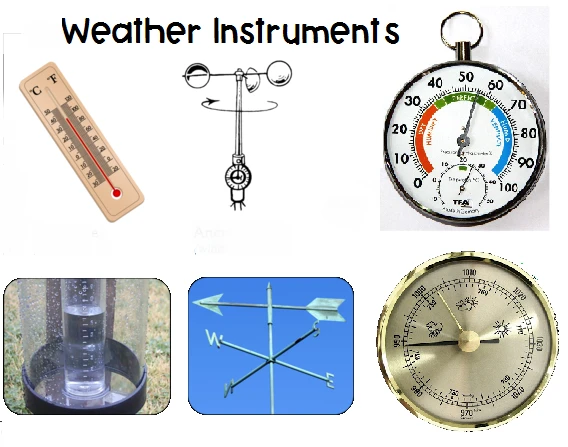
# Weather Gauges and Instruments: Essential Tools for Meteorological Measurement
## Introduction to Weather Measurement
Weather gauges and instruments form the backbone of meteorological science, providing the data necessary for weather forecasting, climate studies, and environmental monitoring. These tools have evolved significantly over centuries, from simple mercury thermometers to sophisticated digital sensors that transmit real-time data across global networks.
## Core Weather Instruments
### Thermometers: Measuring Temperature
The thermometer remains one of the most fundamental weather instruments. Modern versions include:
- Liquid-in-glass thermometers (mercury or alcohol)
- Bimetallic strip thermometers
- Digital thermistors and thermocouples
- Infrared non-contact thermometers
### Barometers: Tracking Atmospheric Pressure
Barometers measure atmospheric pressure, crucial for predicting weather changes. Types include:
- Mercury barometers (the original design)
- Aneroid barometers (more portable)
- Digital barometric pressure sensors
### Anemometers: Gauging Wind Speed and Direction
Wind measurement instruments come in various forms:
- Cup anemometers (three or four cups on a vertical axis)
- Vane anemometers (combine wind speed and direction)
- Ultrasonic anemometers (no moving parts)
- Hot-wire anemometers (for precise measurements)
## Precipitation Measurement Tools
### Rain Gauges
These instruments measure liquid precipitation over a set period:
- Standard cylindrical rain gauges
- Tipping bucket rain gauges (automated measurement)
- Weighing precipitation gauges (can measure snow)
- Optical rain gauges
### Snow Measurement Instruments
Specialized tools for frozen precipitation include:
- Snow gauges with antifreeze solutions
- Ultrasonic snow depth sensors
- Snow pillows (measure water equivalent)
## Advanced Meteorological Instruments
### Hygrometers: Measuring Humidity
Modern humidity measurement devices include:
- Psychrometers (wet-bulb/dry-bulb)
- Hair hygrometers
- Capacitive and resistive electronic sensors
- Chilled mirror dewpoint hygrometers
### Ceilometers and Visibility Sensors
These instruments measure:
- Cloud height and layers (ceilometers)
- Atmospheric visibility (transmissometers or forward scatter sensors)
## Weather Station Integration
Modern weather stations often combine multiple instruments into integrated systems that may include:
- Data loggers for continuous recording
- Wireless transmission capabilities
- Solar power systems for remote operation
- Advanced software for data analysis
## The Future of Weather Instrumentation
Emerging technologies in meteorological measurement include:
- Miniaturized sensors for distributed networks
- LIDAR systems for atmospheric profiling
- AI-powered data analysis tools
- Citizen science weather networks
- Space-based observation systems
As technology advances, weather gauges and instruments continue to become more precise, reliable, and accessible, improving our understanding of atmospheric processes and enhancing weather prediction capabilities worldwide.
Keyword: weather gauges instruments